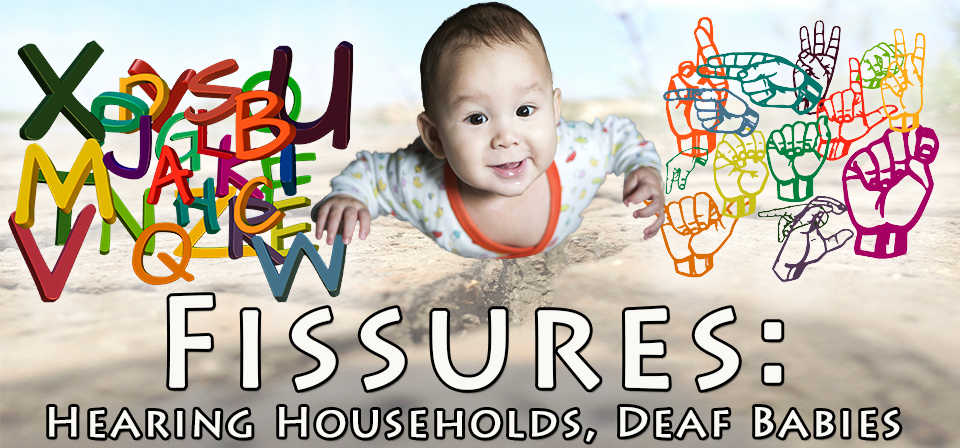Hearing Households, Deaf Babies
Part of our Fissures series
Ahhh newborns! What brings more joy (and sleepless nights) to a household than a fresh little life with pink cheeks and toes, and a giggle no parent tires of? Ok, maybe at 3 am, barely twenty minutes into the fourth catnap for the night, one could do without the giggles, and certainly without the crying. But…babies….what a wonderful design for new humans!
The exploration begins immediately: Ten fingers, check. Ten toes? Check. Two eyes, two ears, one nose? Check, check, and… check. All parts present and in working order.
Then comes the hard news, most parts in working order. Some breakdown in signal transmission from ears to central processing. The brain isn’t registering an audio signal, or perhaps it’s not getting a clear enough signal to make distinctions between words. Language, which came naturally to hearing parents and everyone they know, seems out of reach for the sweetie in their arms.
Modern medicine offers technology, some to enhance sound, and some to bypass the natural pathways for transmitting sound. It’s expensive either way, but it suggests a way for the child to explore and interact with the world in the same way his or her parents do. While we’re thankful for medical technology and all it affords, it doesn’t meet “normal hearing” levels.
Then there’s Sign Language – a complete language with a rich history. Using hands, face, and body, signers can communicate any imaginable idea visually. The good news, and the bad news, is…it’s a whole language. If you struggled with High School French or German, the idea of learning a new language can be overwhelming. Worse, the number of people who sign is significantly smaller than the number of people who speak. Most hearing people don’t have close relationships with sign language users (but many do). Beyond community courses in ASL, local Deaf resource agencies can connect you to language mentors. These Deaf folks visit homes and community locations in order to be living language models for children and families.
The choice between leaning into technology’s promise to bring this child into the hearing world, or studying a new language to join this child in the world that would be theirs is not easy. There’s a lot of heart-wrestling, because of grandparents and family gatherings and the various communities your family is involved in, like church, neighborhood, and hobby groups. Would they be willing to learn a new way of communicating in order to participate in your child’s life? What of schooling, career options, and the pool of marital prospects?
It’s easy to imagine many disasters from the wrong choice – and if we can’t do that for ourselves, there are plenty of nay-sayers and even the devil himself to offer suggestions. It can be paralyzing. This is especially tough when well meaning loved ones insist on a one-way path, in three different directions. The good news is, it’s not a one-way proposition. Studies are validating what many military and missionary families already know – children can thrive in a world of multiple languages. Exposure to language and the accessibility to own it for themselves is the key to healthy development.
Silent Blessings was founded, in part, to encourage parents and families to interact and communicate with their children. We encourage ASL always, and any other tool that proves effective in your family. Above all, your baby needs to connect with you, and with Jesus, at a heart level.
In keeping with that goal, we develop video resources in ASL with voice overs and captions in English and Spanish. We’ve made them available on the free God Loves Deaf Kids app and several websites. Your baby won’t understand much at first, but babies grow up, and we’re thrilled to offer them friends and role models to grow up with.
